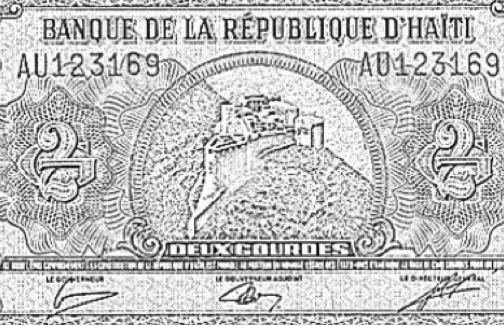By Ilio Durandis
CJ Contributor
Money is not real. It is only used as a reference to the worth of goods or services in society. Its worth is printed on the currency that we carry in our pocket or wallet. In turn, currency, by default, is one of those commodities that depreciate as it is used. The true value of money resides in its potential, and that is in its power to remain unreal. For example, the longer money sits in a bank, the longer it retains its value. Money is something that is used to capture the imagination and to keep hiding the true social and economic inequalities throughout the globe.
The easiest way to keep people from total freedom and true social equality is by fixating most problems as economic issues. How often do you read reports that link illiteracy, lack of public healthcare, crime, and so on with poverty? The current and prevailing theories or theses are that poor communities are more prone to have higher illiteracy rates, crime, and all sorts of instability. Rather than labeling those things as social inequities, it is easier to blame them on economic inequity, hence categorizing them as complex issues that only a few privileged people can solve.
An economic issue often cannot be solved by popular demand or uprising, whereas social issues can. The economic engine is in the hands of a few. And that is the story all over the world. Now, many of you are asking, “How it is possible, two years since the earthquake, that so many people are still living in tents, and why is the speed of reconstruction so slow, given all the money that was donated and pledged for Haiti?”
In theory, most of the money donated is unreal because it cannot be converted into hard currency, and, therefore, most of it is not available to be used. The only way for all of the money to be put to good use would have to be if those entrusted with its disbursement totally trusted those who were supposed to receive it.
Unfortunately, most of the donors or guardians of the donated money have very little faith in the people of Haiti; therefore they would only spend to the limit of their trust.
The simplest answer is to compute all the hard currency (printed paper and coins) received for Haiti’s reconstruction, and make the connection with the services or products it was able to purchase; that is to say, if a billion dollars of hard currency entered the Haitian economy, we must find a way to track it, then see what the currency was able to buy, whether it was wood, blocks, sand, water, human services or equipment to remove rubbles, etc.
A trip to the Banque de la Republique d’Haiti (BRH) is required to make this task easier, but I doubt it will help too much.
Now, let’s try to find the aid money. For the period starting Jan. 13, 2010 and ending Jan. 12, 2012, we need to find out how much currency was in circulation. If money was donated, and, as claimed by the receiving organizations, spent, we must be able to find that hard currency in the economy.
I doubt very much that $1 billion dollars’ worth of currency was ever in circulation in Haiti during that time. Haiti, with a population of 10 million on average and in an egalitarian society, every citizen would have to carry $100 worth of currency at all time to equate to 1 billion dollars in circulation. The reality tells us that was not the case, since Haiti is not an egalitarian society and most live on less than $2 a day. So, who held most of the hard currency? The answer to this easy question is very complex and beyond the scope of this essay.
Here’s the scenario: people all over the world and many foreign governments responded to the immediate crisis after the earthquake in Haiti. Real people donated something that was not real, money, mostly in electronic format (eMoney) via Paypal, text messages or electronic bank transfers to non-governmental organizations (NGOs) like the Red Cross, or private institutions like the Clinton Bush Haiti Fund, which I call the depositories, in the hope that these organizations would convert the money into hard currency to help the Haitian people.
Somewhere between receiving the electronic donations and converting them to hard currency, something strange took place. Most of it never got into Haiti or in the hands of the people who were supposed to receive the help.
On the other side, foreign governments — most of them — only made a nominal pledge to donate a specific amount of money, but not an exact amount of currency, and no timeframe was giving for full disbursement. A pledge is as unreal as money itself. No one can use a pledge to purchase real products or services. Money adds value to currency, whereas a pledge only gives hope that money might be received at a time to be determined.
In short, a pledge to donate only gives hope to receive, and no real construction can take place until the transaction is fully completed.
For the most part, after the earthquake and during the relief period, people could see and valorize the amount of aid that was given. Immediate relief came in the form of food, water, tents, soldiers, disaster relief experts, transportation and so forth.
All of these goods and services carried a price, and donated money was used to pay for them.
Unfortunately, it now seems that most of the money was used for services rather than physical or real goods – hence, very little progress in the people’s living conditions.
Why was that the case? Remember that money is unreal, so in order for it to have value, it must be converted into hard currency (paper or coins) to purchase real goods and pay for real services. A fraction of all the world’s money is ever converted into real currency.
There are not enough trees or enough metals to convert the sum of all the world’s money into currency; therefore, we live in a virtual world when it comes to the economy. Haiti’s aid money is part of the world economy.
Since the Haitian government had an image issue (corruption) and the Haitian banks did not have the liquidity capacity to convert money into hard currency, the big NGOs and foundations like Clinton-Bush represented the perfect depositories for the donated money. This is an important note, because, although a lot of money was donated, only a fraction of it would need to be in hard currency to pay for a limited amount of goods and services in order to keep the relief effort fluid and prevent a social uprising. What looked like chaos to most of us in the beginning was nothing short of complete order.
Most of the hard currency was used to pay salaries of expats, NGO workers, soldiers and private companies that came to remove rubble.
If, by asking for the aid money, one is expecting results in either physical construction or real human services, like teachers educating the youth, people building needed roads or farmers growing real food, because all of these things require hard currency to be used, then it might take longer than anyone would hope for in order to see where their donated money has gone.
The sad reality is that the donated money was unreal to start with, and most of it never got converted into hard currency, which could have been used to stimulate the Haitian economy, and eventually make the difference that most of the donors were expecting.
The reconstruction will only move as fast as money is converted into hard currency. As long as money sits in the account of the depositories in the form of eMoney, the Haitian people will continue to suffer and most of the foreign media will continue to be naive by perpetually asking or searching for something that is unreal.
People are real, homes are real, roads are real, food is real, and real currency is needed to render society mobile. In essence, the slow progress of the reconstruction is directly tied with the lack of hard currency, and not a lack of money. Wealthy people, big NGOs and other depositories use money, whereas real people need currency to meet their daily lives demands.
It’s time to search for the currency, not the money.
Ilio Durandis, a Caribbean Journal contributor, is the founder of Haiti 2015, a social movement for a just and prosperous Haiti. He is a columnist with The Haitian Times.







